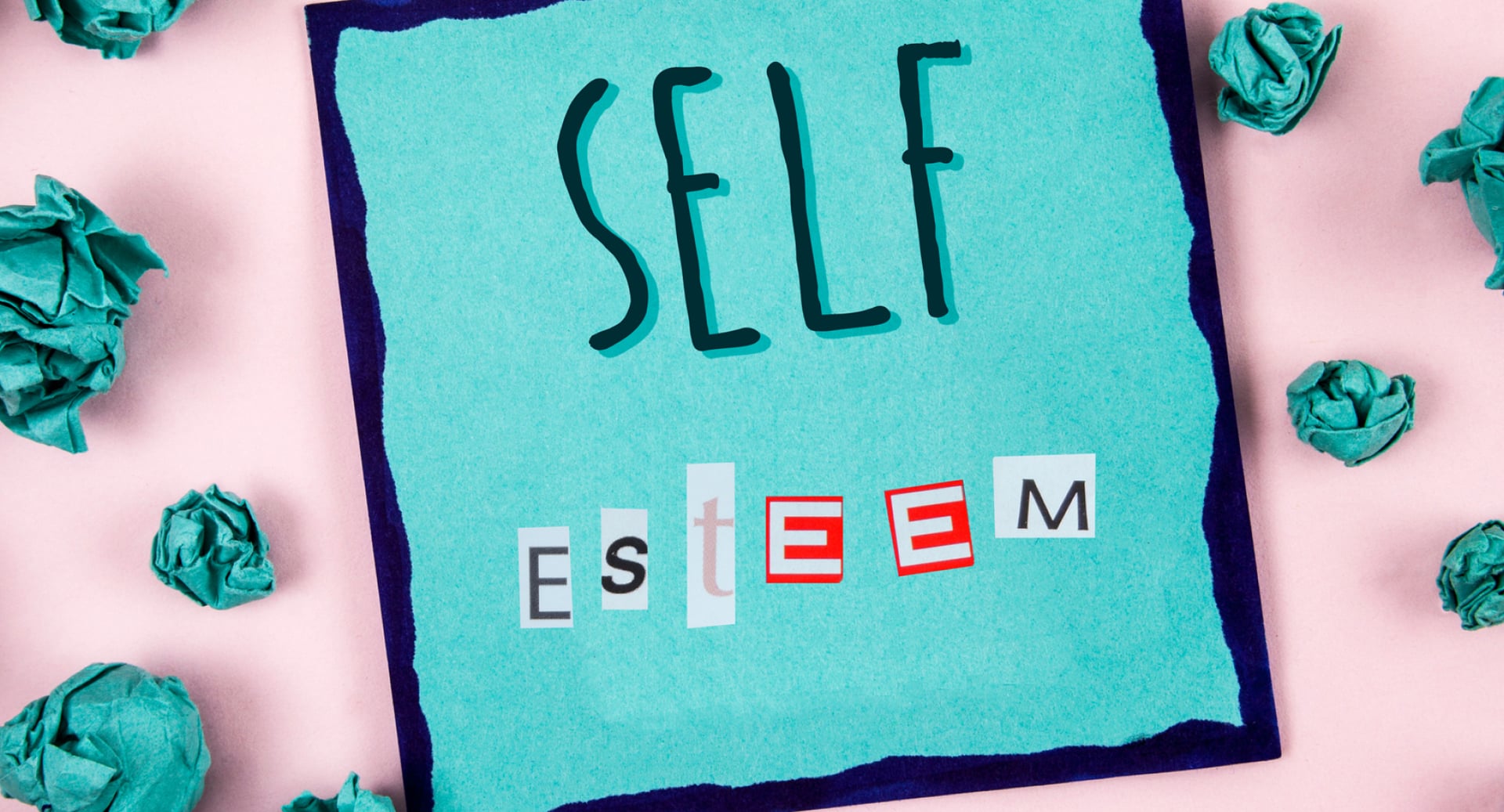ACT for Low Self-Esteem Issues

Expert and clinical psychologist, Joe Oliver, explains how ACT can address negative self-talk and help individuals reach their full potential.
ACT addresses low self-esteem by promoting self-acceptance. Self-acceptance is a relationship we cultivate with ourselves in which perceived faults or flaws are seen as natural and understandable products of a less-than-perfect upbringing or current situation, rather than a damning indictment on one’s entire personality that can never be changed. ACT helps us respond mindfully to harsh or critical thoughts, so we can hold ourselves with kindness, to recognise the common humanity in our imperfections.
However; self-acceptance in ACT is not a passive or permissive state. It is the platform from which we become clear on what matters to us most in life, from which we take actual concrete steps toward embodying these values. Paradoxically, self-acceptance is often a very active journey in allowing ourselves to be who we truly are.
The ACT model sets out 3 broad processes (Open, Aware and Active) that are aimed to promote psychological flexibility, which is important to the concept of self-esteem. Psychological flexibility allows us to respond with emotional and behavioural agility when we are feeling bad about ourselves, which would normally lead us to feel overwhelmed and become overly focused on not being hurt by others or wanting to be liked.
Open means responding with acceptance and openness to painful internal experiences that show up. Rather than fighting or struggling with these experiences, ACT teaches how to lean into these experiences and be willing to have them, so that we can respond with agility.
Aware describes the process of learning to respond with mindful awareness to our environment, both outside and inside ourselves. Crucially, it focuses on how to slow down automatic responding when old and painful stories about ourselves show up (for example, I’m not good enough). It helps us to observe these stories with a stance of non-judgment and let go and heal from past hurts.
Active builds on the processes of Open and Aware, to promote clarity of life meaning and purpose and to take actual steps towards what matters most in life.
All of these processes help us be less overwhelmed by bad feelings about ourselves. ACT processes help a person establish a healthier relationship with themselves and be more guided by their personal values, rather than constantly needing to be liked.
The traditional approach to low self-esteem has been to aim for high self-esteem. Although this initially made sense, decades of research showed that raising self-esteem actually produced all sorts of negative results, such as increased narcissism, social competitiveness and disconnection (Baumeister, et al., 2003).
More recent interventions have focused on self-acceptance. Self-acceptance allows for a healthier relationship with ourselves, whereby we are less dominated by harsh, judgemental or critical thought and learn to respond to ourselves with kindness and compassion. By not constantly fighting with ourselves to be different, we can allow ourselves to be who we actually are, acknowledging our imperfections in a healthy way, whilst being able to allow ourselves to take steps towards the things we care most deeply about.
 pdf
pdfBehaviours such as staying in unhealthy relationships that are damaging are often the result of beliefs like, “I don’t deserve any better.” Typically, beliefs like this develop to help the person (usually as a child) limit the damage of an abusive environment or traumatic circumstance, either by making sense of it or giving them a sense of control (“If I can do things just right, then maybe I can finally win my parents’ love").
A key learning point is to help a person see both the origins of their current behaviour and understand that although it was an incredibly useful survival strategy growing up, it is no longer useful in current times.
This insight then becomes the platform from which they can begin to respond to “I don’t deserve better” beliefs with more mindful awareness and with less automatic habitual responses. They can then learn to focus on self-acceptance, which will allow them to develop a healthier relationship with themselves. From here, they will learn to develop healthier relationships with others and undertake new behaviours, such as setting boundaries, learning to say “no,” and asking for needs to be met.
Key is understanding the origins of a self-critical voice. Where did I learn to talk to myself in this way? Who taught me this? When did I learn this? This helps us to see self-criticism as a learned behaviour and not an inherent quality.
From here it’s important to understand the purpose of self-critical talk. Does it help me feel more in control? Does it help me achieve goals? Does it keep me in line?
The next question to ask is how useful is my self-critical voice? How does it help? How does it hold me back? Could there be scope for self-talk that is actually overall more helpful to me?
Almost always, self-critical talk does “help” in some ways and it's crucial to acknowledge this. Perhaps it helps drive us forward. Or maybe it helps us from putting ourselves in situations that are difficult. But inevitably, it has some big limitations. For example, it drives us too hard, generally makes us feel bad about ourselves, and often doesn’t fit with our core values (ie. Would you ever talk to a loved one with the same tone or harshness?)
Key practical strategies from here can include:
• Thank your self-critical mind. For example, “thanks mind, I appreciated you looking out for me and wanting me not to fail”.
• Give your self-critical voice a name, such as The Mean Governess, or George the Grump. Having a name helps us hold the self-critical voice with a bit more lightness, but it also helps us spot our voice in action.
• Write down what your self-critical voice says. A lot of the power of voices comes from their ability to say stuff without us hardly noticing it. We just end up blindly going along with what they say. Writing it down helps us to starkly see exactly what we are saying to ourselves.
• Self-critical voices often appear when we are out of our comfort zone (for example, doing something new) or we’ve made a mistake. At these times what we often need is to hold ourselves with kindness and warmth. Saying something like, “It’s ok to feel scared, this is new to me”, or “I’m feeling disappointed that this went wrong, and this will pass”, can be immensely more helpful than beating ourselves up.
The first piece of advice is to remember that parenting is hard, very hard, and you are going to do some things “wrong”. Getting the balance exactly right is impossible, so if you have a perfectionistic streak, a good starting point is to work on dialling it down! Good enough parenting is the aim of the game.
Good self-esteem for children comes from growing up in an environment that for the most part, meets their needs. Depending on who you talk to, there are several key psychological needs including, knowing they are loved, having clear boundaries and limits, being listened to and understood, receiving praise and positive feedback and being encouraged to adventure and explore.
If these are for the most part met, children learn that they are safe, loved and able to express themselves in the big wide world. They learn to step out, explore and adventure; whilst at the same time, being able to return to safety and get comfort when things are scary or go wrong. They learn that the world mostly makes sense, it’s ok to ask for their needs and desires to be met, and they are seen, acknowledged and valued for who they are.
Here are some top tips to help with this:
• Encourage your child to adventure, explore and try things out for themselves. Notice the urge to protect or problem solve and allow them space to make mistakes. This helps them find their own place in the world and develop a sense of self-efficacy.
• Encourage them to talk about their emotions to help them label, describe and identify what’s going on internally. It can be useful to talk more about your own feelings, to help model for the child. By doing this, they learn to manage their emotions and understand why they feel particular emotions.
• When your little one is upset, remember that validating how they are feeling is important. Rather than rushing to make them feel better, say things like, “I can see you’re really frustrated and sad now. That must be difficult”. This helps them to learn that their feelings are valid and important, even the difficult ones.
• Set firm and consistent limits with your child and explain why the limit is in place. This helps your child appreciate fairness as they see you taking the time to explain the purpose of a rule. It also helps them feel safe and cared for.
• Give your child appropriate choices, for example in everyday activities such as what to eat or what to wear. This helps them to feel empowered, listened to and included. It also helps them build and strengthen their sense of autonomy.
• Use lots and lots of positive feedback and reinforcement when your child demonstrates behaviour you want to see more of (expressing emotions, clarifying what they want, sharing, being patient). It’s very easy to forget to do this, as unhelpful behaviours tend to get most of our attention. However, learning works best when we focus on shaping up and regarding the behaviours we want, rather than trying to stop the behaviours we don’t want.
Rejection is hard, hard, hard. It’s an experience everyone on the planet has had at some point and has struggled with. This is important to remember as it can be easy to end up beating ourselves up for being overly sensitive, weak, or not like everyone else. So, a good starting point is not to add extra layers of pain when we are hurting already. Keep in mind though, that there is nothing wrong with rejection per se. It is a natural part of socialising and connecting with others, and isn’t something to be avoided. However, when the self-esteem button gets pressed, a healthy rejection experience can tip into something that is unhealthy. What often happens is that an old story about ourselves gets activated. “See, I am inadequate or unlovable!” And then we start trawling through our past: “This always happens to me” as our minds flick through the slide show of our past rejections and failures. And inevitably, our minds eventually turn to the future: “I will never find love, I will be lonely forever”.
Our minds flail around in a futile attempt to find the source of the problem and solve that problem. The more we try, the deeper into the hole we dig ourselves.
The first recognising that our self-esteem button has been pressed, we then have the opportunity to step out of automatic pilot responding. From here, it’s possible to see that the pain of rejection isn’t a problem to be solved or fixed. It is something to be acknowledged, turned towards and held with warmth and kindness. Rather than fighting with the feeling, trying to understand it or fix it by figuring out what went wrong, we start to do the work of moving through the hurt and sadness.